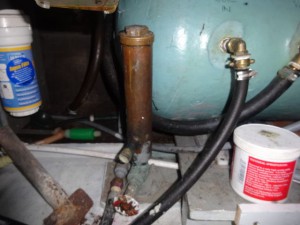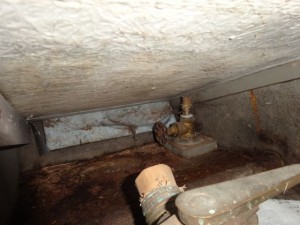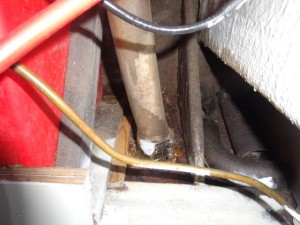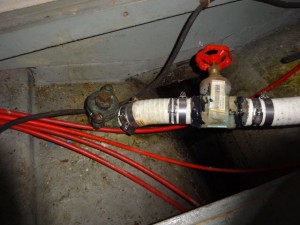The importance of Boat Seacock Valves & their Accessibility
Definition: A seacock is a valve on the hull of a boat or a ship, permitting water to flow into the vessel, such as for cooling an engine or for a salt water faucet; or out of the boat, such as for a sink drain or a toilet.
Seacocks are left open or are closed depending on the situation. Seacocks feeding into or out of a closed system, like the engine cooling system, are almost always left open. Seacocks connected to something open, such as a sink drain, might be opened up in port but closed when at sea. The reason for this is that when the boat is level, the drain or other opening will always be above the waterline, and so water will only flow out. At sea, when the boat rolls in the waves, the opening may sometimes be below the waterline. If the seacock is open, water may flood the boat.
During a recent survey, I came across a major issue. Luckily not related to the structure of the vessel But the seacocks were not up to their job and inherently unsafe
The boat is fitted with four seacocks in or near by the engine space.
The engine seacock was seized and will probably be ok after servicing however the other three all displayed ‘safety’ problems
The water intake for the head has been mounted in a very difficult to reach part of the bilge. It is next to the chine all the way under the helm station sole board and even my extremely extended long arm couldn’t reach it. And it didn’t seam to be any easier access from the top unless one removed all the wires and useful bits from the helm station and unscrewed the sole board. So I don’t think this seacock has been serviced for a long time and all seacock must be easy to access and work on.
The third seacock was actually a lot easier to reach and had been made redundant. Nothing wrong with that except it was capped with a wooden bung, the bung being ‘pushed’ into the hole
A wooden bung can rot or split or dry and is mostly used as a quick fix to get a boat to safety when a pipe or a seacock is leaking. But it shouldn’t be used as a definite solution. A right solution would be to secure the seacock with a bronze screw cap and keeping the seacock closed as well.
Seacock # 4 Wasn’t actually there The pipe was directly fixed with one jubilee clip onto the skin fitting. Now would anyone feal safe about that ? Knowing that the skin fitting was 1.25″ diameter. Luckily the boat had one wooden bung but this was in use already on another seacock !
Well joke apart, any through hull aperture under the water line should be made secure and safe but also maintained in good condition. A wooden bung of the right size should be attached to each seacock so one doesn’t waste time looking for the bag of bungs in a moment of rush. And make sure your bilge pumps are in working order!
On another boat, a sea going one, I’ve found a gate valve attached via a 6” long hose to a Blake seacock fitted onto the hull. Now what had happened I believe is that the Blake valve had seized and didn’t get serviced so some one found a solution by fitting an in-line valve six inches away from the hull. Practical yes but not logical and not safe The Blake valve should have been serviced or replaced in this case with another seacock and job done. As at the moment the boat hasn’t got a seacock fitted onto the hull.
Original seized seacock plus second seacock added in-line
So as you can see from those photos, whether you use one or two seacocks or maybe none! It doesn’t matter, what you have to remember is that seacock are here to stop water coming in! And so they need to be serviced and kept in operational condition.
For more information contact European Marine Services Ltd (inc European Marine Surveys)
Tel : 01603 327 123 www.europeanmarinesurveys.com










